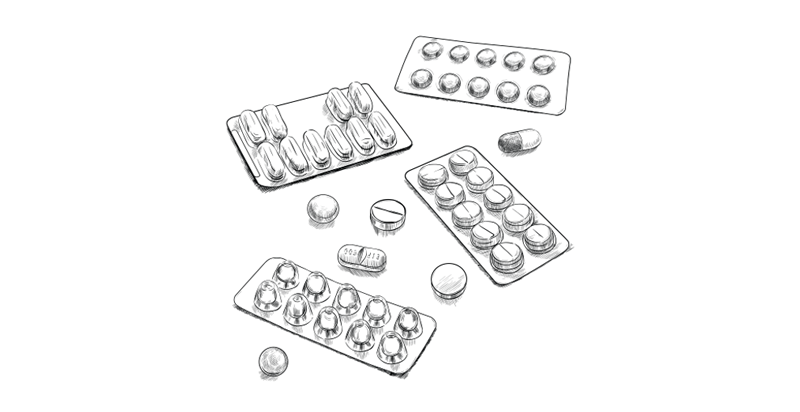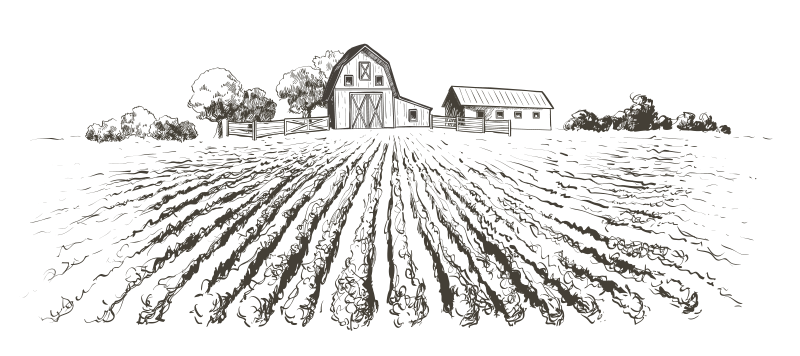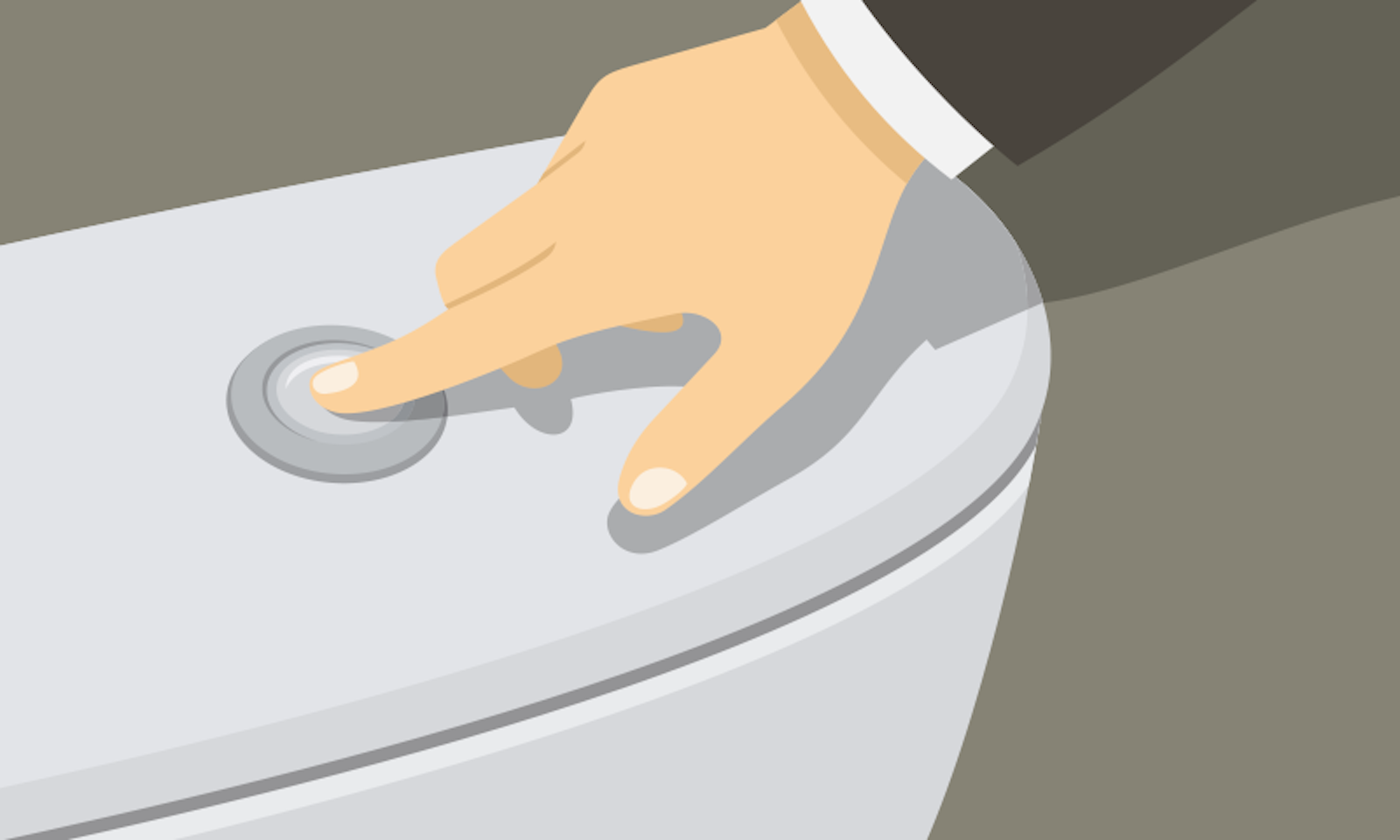The epitome of modern convenience, our toilets make waste disappear with incredible efficiency and ease. We seldom think twice about pulling the lever or about where all that swirls down the pipes ends up afterward. But the massive mazes of sewage pipes underneath our towns and cities ultimately lead to some body of water nearby, and many of these aquatic ecosystems lead to the ocean. We tend to believe that our wastewater treatment plants—the marvels of 21st-century engineering—clean up everything we dish out. Unfortunately, it is a big misconception, in part because the populations grow faster than treatment plants are built, and compounds evolve faster than the cleaning techniques that are designed to filter them.
Our wastewater systems are very efficient at removing pathogens, but not environmental pollutants. Neither do most of them have the right equipment to destroy many pharmaceuticals that come out of us and flow into the seas. Some of these chemicals are so ubiquitous in the ocean that scientists use them as indicators of how far contamination spreads, says Stephanie Wear, marine biologist and founder of Ocean Sewage Alliance, a nonprofit that aims to “re-potty train the world.” In her recent study published in Biological Conservation, Ware’s team used diclofenac—an anti-inflammatory drug which persists in the water for weeks to months—to map how far sewage pollution spreads.1 As these chemicals float in the water, they smother corals, poison fish, kill mangrove forests, and destroy coastal marshes. “We found that 31 percent of salt marshes globally were heavily polluted with human sewage,” Wear says. “We are destroying the ocean with our pollutants.”
How much caffeine is deadly for aquatic species?
Plastic, as we know, is the scourge of the oceans. According to the Intergovernmental Oceanographic Commission of UNESCO, we dump about 10 million metric tons of plastic into the ocean every year. By 2050, plastic will outweigh all the fish in the seas. We don’t flush plastic water bottles, for instance, down the toilet. But we do flush microplastics. We consume a credit card’s worth of microplastics every week, which find their way into waterways and the ocean, into fish, and back into us. Plastic gets the headlines but it’s not the whole story. Our sewage is a noxious cocktail of chemicals that are coming back to us like a toxic tsunami. Widespread ocean pollution threatens the health of over 3 billion people, points out Phillip Landrigan, epidemiologist at Boston College and a corresponding author of a recent study that depicts the harmful and deadly effects of these contaminants.2 Here are eight contaminants circulating in that surging tide, if you dare to dive in.
Caffeine

Oh, that morning cup of Joe without which so many of us can barely function. It is the single most commonly consumed psychoactive compound worldwide, found in coffee, tea, chocolate, energizing drinks, and in some drugs. Once it gives us the jolt we crave, it passes through us, flowing into the sewer and then into whatever body of water that sewer is connected to. Relatively stable under variable environmental conditions and constantly replenished by us, it is commonly released into the environment in the wastewater effluent. People drinking too much caffeine can suffer certain health issues, including nervousness, nausea, and increased heart rate. Concentrations of 80 to 100 mg per liter are considered lethal for humans, and while deaths are rare, they aren’t unheard of—a review of medical literature in the journal Nutrients found 92 cases.3 How much is deadly for aquatic species? There are no set numbers, but studies are now spilling the beans, finding that caffeine can mess up some of the creatures’ functions. It can inhibit growth in fathead minnows (Pimephales promelas),4 impair reproduction in purple sea urchins (Strongylocentrotus purpuratus),5 and cause skeletal deformation in South America’s catfish (Rhamdia quelen).6
Antibiotics

Some of the most widely prescribed medications worldwide, antibiotics are used for animals and humans. In 2016, American doctors wrote 270.2 million antibiotic prescriptions—enough for five out of every six people. In 2019, it was a little less—251.1 million prescriptions, an equivalent to 765 per 1000 persons. However, when we take antibiotics, we absorb and metabolize only a small portion of the whole dose, excreting a much larger amount of it in urine and feces. As we flush, these chemicals flow into rivers, lakes, and the ocean, eventually making their way into marine creatures, including those we eat. A 2014 study found five different types of antibiotics in wild and farmed seafood sold in the United States.7 The more recent 2021 study, done in Chile, the largest producer of salmon after Norway, looked at the antibiotics levels in wild and farmed salmon and trout, and found plenty in both.8 Seafood farmers commonly treat their stocks with antibiotics just as poultry and cattle producers do, so finding antibiotics in farmed fish isn’t overly surprising. However, wild salmon, trout, shrimp, and other species should not have them, and yet the Chilean study notes that “antibiotics were present with highest frequency and concentrations in wild fish.” The authors point at sewage as a source.
The presence of these compounds in marine creatures is not only undesirable for human consumption, but it contributes to antibiotic resistance as it enables pathogenic bacteria to develop defense mechanisms against it. “That’s a breeding ground of antibiotic resistance,” says Wear. “By not treating our waste properly, we are essentially breeding superbugs.”
Antidepressants

The use of antidepressants and anti-anxiety medications has been steadily rising worldwide, with the pandemic woes certainly adding to it. Recent studies show that fish are now swimming in them also. One Texas-based investigation found that fish that swam in creeks that received effluent from nearby sewage plants had Prozac and Zoloft in their tissues, mostly in brains and livers.9 In another study, a team of researchers from several different universities examined fish in the Niagara River, which connects Lake Erie and Lake Ontario, absorbing effluents from several local wastewater treatment plants.10 The team found that the fish—including smallmouth and largemouth bass, rock bass, white bass, white and yellow perch, walleye, bowfin, rudd, and steelhead—were on a “multi-drug regiment” that doctors would hardly ever prescribe together. The uncanny drug combo included Zoloft (sertraline), Paxil (paroxetine), Celexa (citalopram), venlafaxine—an antidepressant and nerve pain medication, plus bupropion—an antidepressant and smoking cessation aid. Different species carried different levels of these chemicals, accumulated in their tissues. “The highest bioaccumulation was found in the brain, followed by liver, muscle, and gonads, and can be attributed to direct exposure to WWTP effluent,” the authors wrote. A more recent study went a step further and examined whether such chemicals affect fish behavior.11 Turns out some do—the fish on Prozac were less aggressive at chasing prey and eating it, which, authors deemed, isn’t a good thing for the species’ survival.
Human waste

We may not think that bodily fluids have any use, but human waste is an excellent fertilizer, naturally full of three nutrients, nitrogen, phosphorus, and potassium, which plants use to build their cell walls, grow, and thrive. That works well on land, but not in water. The potent trio fuels the blooms of toxic algae that overgrow so much that they suck up all the oxygen from the water and release toxins as the byproduct of their lifecycle, killing fish, turtles, birds, and even marine mammals. Called HABs, for Harmful Algal Blooms, they are bad for humans also. The gasses they release while floating near beaches can cause respiratory problems, neurological damage, and even death.2
“By not treating our waste properly, we are essentially breeding superbugs.”
That’s not all. Our sewage effluent (and also agricultural runoff) causes eutrophication—an over-enrichment of the marine and aquatic environments.12 It triggers massive overgrowth of grasses in coastal marshes: The grasses grow taller, yet with weaker roots—because of the overabundance of nutrients they don’t have to invest into their root systems. Yet, it’s the roots that hold the marshes together, so when they’re weak, the marshes fall apart, rot, crumble, and slowly turn into mudflats. Similarly, the mangrove forests end up with weakened root systems and start dying out. “Their canopies grow big and while they look healthy, their roots are not,” Wear says. “When there is a big drought, they need healthy roots to stay and when they don’t have strong roots, they die out.” Healthy marshes and mangrove forests work as sponges, absorbing waves during high tides and storm surges, so in addition to serving as fish nurseries, they also protect us from floods. The destruction of such protective systems leaves coastal residents vulnerable to sea level rise.
Pesticides

We don’t pour pesticides down the drain, but rains do, as all that rainwater flushes into the sewer pipes or trickles through the ground into the streams and rivers that lead to the ocean. Unlike mercury, pesticides do not build up the food chain, but they leave a trace of damage. That includes a very popular type of pesticide called neonicotinoids, the market for which in 2014 exceeded $3 billion, and accounted for about 25 percent of global pesticide sales.13 Designed specifically to destroy various terrestrial insects, they continue to do the same in the ocean. On the ground, they kill unwanted insects that damage our crops, and in the water, they kill aquatic invertebrates, which disrupts ecosystems and food chains. They also poison fish. “There have been major fish die offs, recorded in situations where large quantities of pesticides washed into rivers or lakes or the oceans,” Landrigan says.
Mercury

We don’t flush mercury down the pipes either, but this vaporized byproduct of coal burning ends up in sewers with rain and snow—and eventually in the bottom of the ocean. There, some marine bacteria transforms it into a different compound called methylmercury, which is much more harmful than mercury itself. A neurotoxin that has the ability to bind to certain receptors in the brain, mercury paralyzes various critical enzymes in brain cells, which leads to cell damage and even death. Unlike pesticides which do eventually fall apart, mercury is here for the long haul: It accumulates in the environment and in creatures, particularly in big predatory fish—including tuna, which people like to eat. Mercury is particularly dangerous to unborn babies whose brains are still developing. “When a pregnant woman eats fish contaminated with mercury, it gets into her bloodstream and passes right through to the baby and damages the baby’s brain,” Landrigan says. “And babies’ brains are much more sensitive to mercury than the adults’ brains because they’re still growing and developing.”
Human bacteria

We worry about zoonotic diseases spilling into us, but in this case, we are quite literally spilling our pathogen onto corals by way of inadequately treated effluent or storm overflows. In humans, Serratia marcescens is a pathogen associated with the gut environment, which can cause diarrhea as well as urinary, respiratory, and other infections in people. In the ocean, particularly in the Florida Keys and the Caribbean, S. marcescens sickens the already stressed-out coral reefs, giving them the so-called white pox disease, producing patches of dead white tissue.14 One study found that in the Florida Keys the elkhorn coral, Acropora palmata, is so severely affected that it loses about 2.5 cm2 of its surface a day—about 70 percent is lost already.15 “This is the first time, to our knowledge, that a bacterial species associated with the human gut has been shown to be a marine invertebrate pathogen,” the study authors wrote.
Forever chemicals

Praised for their indestructibility, PFAS (per- and polyfluoroalkyl substances) are the so-called forever chemicals, components of which break down very, very slowly over time. Used in firefighter foams, fire-retardant fabrics, water-repellant clothes, and nonstick pans, among other things, PFAS are now present in soil and water, and have been found in the blood of people and animals all over the world. There are literally thousands of different PFAS chemicals present in consumer, commercial, and industrial products, and their effects on people’s health aren’t yet fully known. Some of them flow into the rivers and oceans when we launder clothes that contain them, and others from factories that use them. There are also some legacy chemicals such as polychlorinated biphenyls or PCBs—the highly carcinogenic compounds once used in industrial and consumer products and banned in 1978—that are still swirling in the toxic tsunami that’s now coming back at us.
What can we do to turn that noxious tide? Experts say that the solutions lie in better sewage technologies and stricter environmental policies. Wastewater professionals are increasingly looking at ways to treat sewage with pyrolysis—a process in which sludge or any other biomass is heated without oxygen, which breaks down chemical bonds. Whether pyrolysis can fully break down PFAS isn’t clear yet, but it does degrade many other compounds present in sewage. The result is called biochar, a substance high in carbon, which can be used to ameliorate soil.
On a more long-term scale, our environmental policies must become more aggressive at regulating chemicals. “So far, most countries have operated on the premise that chemicals are innocent until they’re proven guilty—sort of like criminal law,” says Landrigan. It takes a couple of decades to realize that some are causing harm, and then the public goes through multi-year battles to restrict their use, which is a backward way of doing business. “You wouldn’t buy a house or a car without looking it over—and yet, we let chemicals come to market with almost no scrutiny,” he says. “So we have to turn 180 degrees and we have to say that chemicals must be proven safe before they’re allowed to come to market.” We can stop the toxic tsunami if we are more conscious about what we approve, market, manufacture, and let flow down the drain, at homes, factories, and farms. ![]()
Lina Zeldovich grew up in a family of Russian scientists, listening to bedtime stories about volcanoes, black holes, and intrepid explorers. She has written for The New York Times, Scientific American, Reader’s Digest, and Audubon Magazine, among other publications, and won four awards for covering the science of poop. Her book, The Other Dark Matter: The Science and Business of Turning Waste into Wealth, was just released by Chicago University Press. You can find her at LinaZeldovich.com and @LinaZeldovich.
Lead image: Flat vectors / Shutterstock
References
1. Wear, S.L., Acuña, V., McDonald, R., & Font, C. Sewage pollution, declining ecosystem health, and cross-sector collaboration. Biological Conservation 255, 109010 (2021).
2. Landrigan, P.J., et al. Human health and ocean pollution. Annals of Global Health (2020).
3. Cappelletti, S., et al. Caffeine-related deaths: Manner of deaths and categories at risk. Nutrients 10, 611 (2018).
4. Moore, M.T., Greenway, S.L., Farris, J.L., & Guerra, B. Assessing caffeine as an emerging environmental concern using conventional approaches. Archives of Environmental Contamination and Toxicology 54, 31-35 (2008).
5. Aguirre-Martínez, G.V., et al. Are standard tests sensitive enough to evaluate effects of human pharmaceuticals in aquatic biota? Facing changes in research approaches when performing risk assessment of drugs. Chemosphere 120, 75-85 (2015).
6. dos Santos, J.A., et al. Sublethal effects of environmental concentrations of caffeine on a neotropical freshwater fish. Ecotoxicology 31, 161-167 (2022).
7. Done, H.Y. & Halden, R.U. Reconnaissance of 47 antibiotics and associated microbial risks in seafood sold in the United States. Journal of Hazardous Materials 282, 10-17 (2015).
8. Carrizo, J.C., et al. Different antibiotic profiles in wild and farmed Chilean salmonids. WHich is the main source for antibiotic in fish? Science of the Total Environment 800 149516 (2021).
9. Parks, N. Fish on Prozac. Science (2003).
10. Arnnok, P., Singh, R.R., Burakham, R., Pérez-Fuentetaja, A., & Aga, D.S. Selective uptake and bioaccumulation of antidepressants in fish from effluent-impacted Niagara River Environmental Science & Technology 51, 10652-10662 (2017).
11. Martin, J.M., et al. Field-realistic antidepressant exposure disrupts group foraging dynamics in mosquitofish. Biology Letters 15, 20190615 (2019).
12. Deegan, L.A., et al. Coastal eutrophication as a driver of salt marsh loss. Nature 490, 388-392 (2012).
13. Frank, S.D. & Tooker, J.F. Neonicotinoids pose undocumented threats to food webs. Proceedings of the National Academy of Sciences 117, 22609-22613 (2020).
14. Sutherland, K.P., et al. Human sewage identified as likely source of white pox disease of the threatened Caribbean elkhorn coral, Acropora palmata. Environmental Microbiology 12, 1122-1131 (2010).
15. Patterson, K.L., Porter, J.W., Ritchie, K.B., & Smith, G.W. The etiology of white pox, a lethal disease of the Caribbean elkhorn coral, Acropora palmata. Proceedings of the National Academy of Sciences 99, 8725-8730 (2002).






























